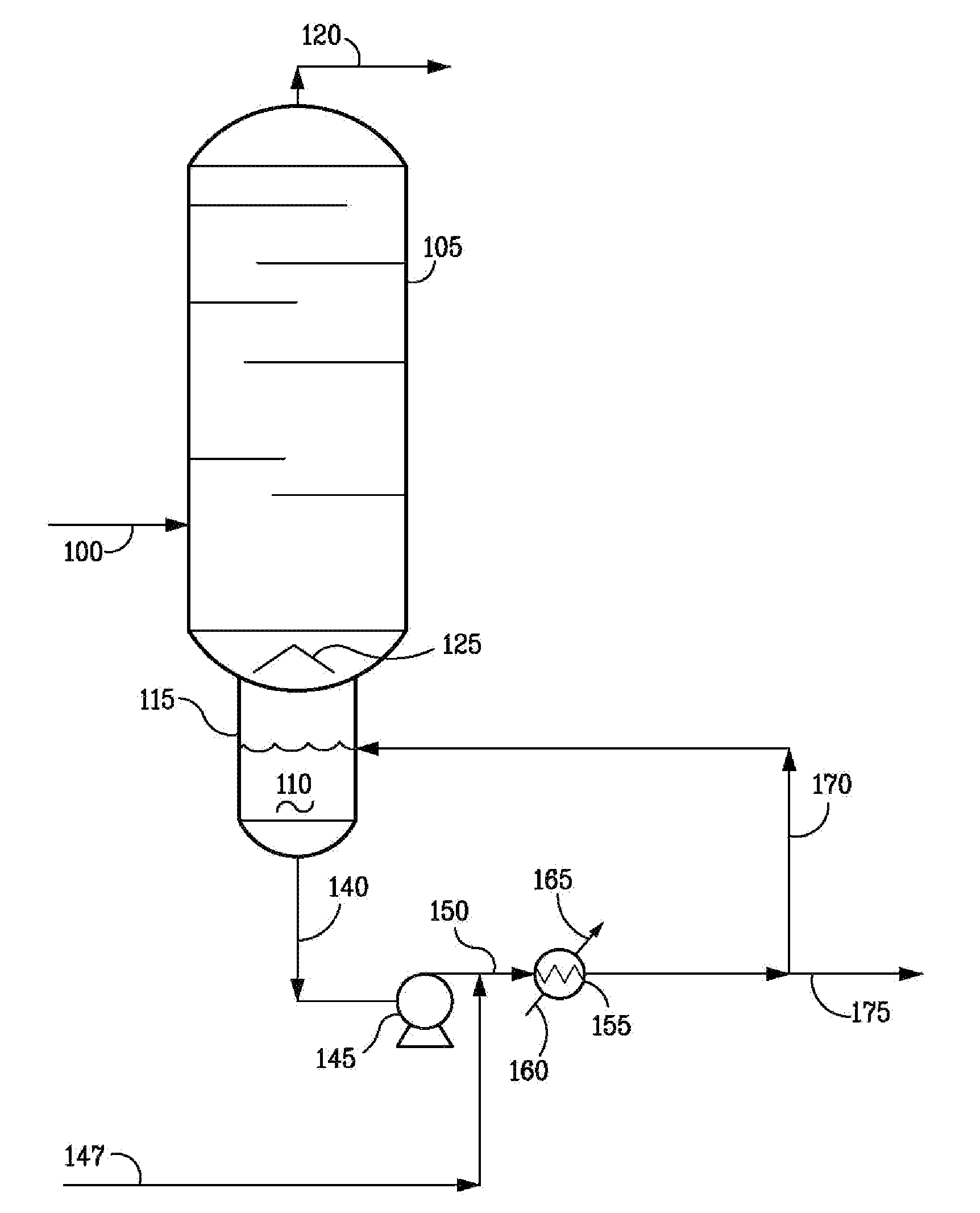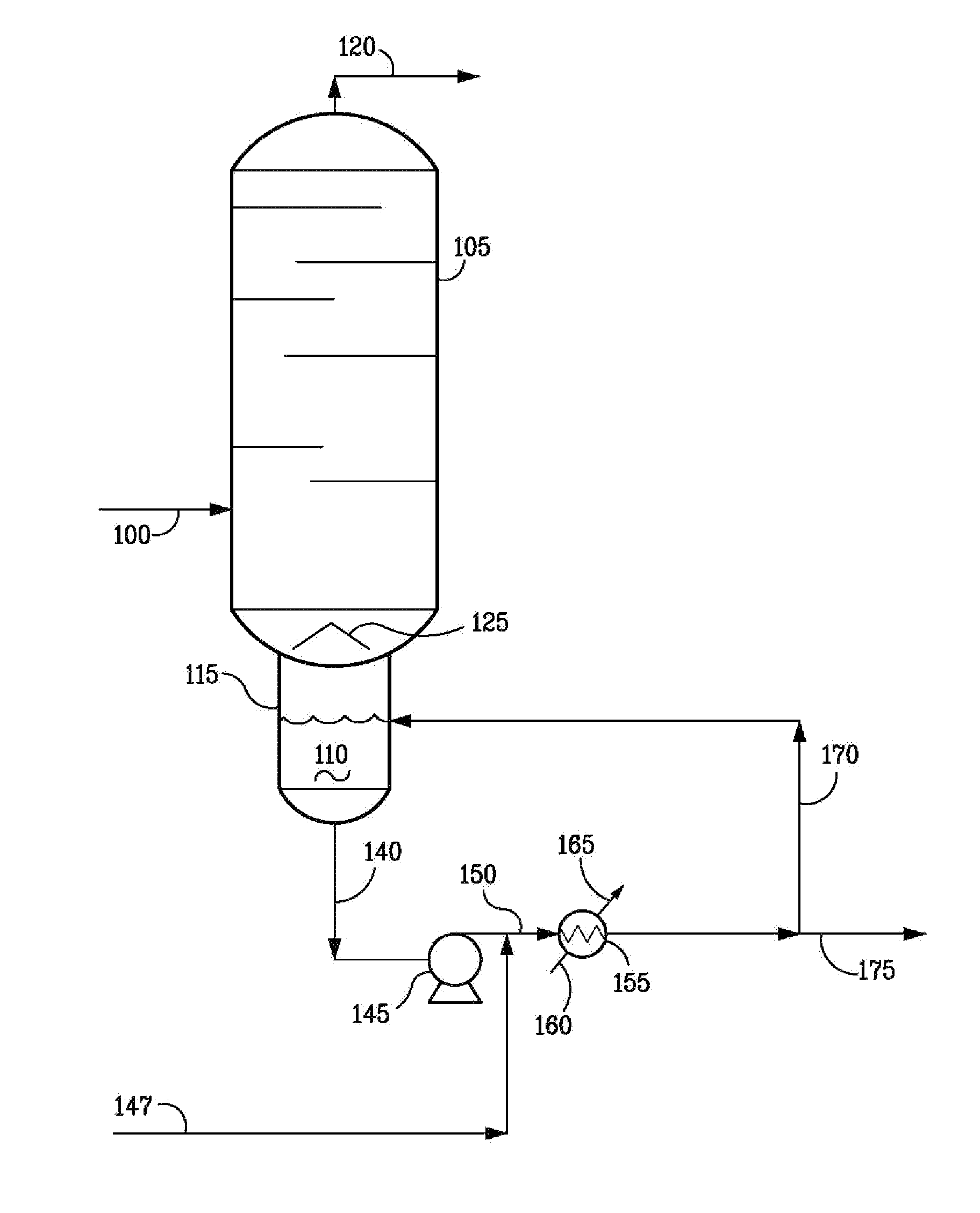Method For Processing Hydrocarbon Pyrolysis Effluent
a technology of hydrocarbon pyrolysis and effluent, which is applied in the direction of hydrocarbon oil treatment, cracking process, working-up pitch/asphalt/bitumen, etc., can solve the problems of significant downgrade of liquid product properties, inability to use steam crackers, and inability to separate relatively small amounts of tar from water quench, etc., to achieve the effect of reducing overall tar temperature, reducing viscosity and increasing condensation reactions
- Summary
- Abstract
- Description
- Claims
- Application Information
AI Technical Summary
Benefits of technology
Problems solved by technology
Method used
Image
Examples
Embodiment Construction
[0061]The present invention provides an efficient way of treating the gaseous lower olefin-containing effluent stream from a hydrocarbon pyrolysis reactor so as to remove and recover heat from the stream while providing high value steam cracked tar product and maintaining quench balance.
[0062]Typically, the effluent used in the method of the invention is produced by pyrolysis of a hydrocarbon feed boiling in a temperature range, say, from about 104° to about 1022° F. (40° to 550° C.), such as light naphtha or gas oil. Lighter feeds may also be used, but given their reduced tar make in steam cracking are less advantageously utilized by the present invention. Preferably, the effluent used in the method of the invention is produced by pyrolysis of a hydrocarbon feed boiling in a temperature range from above about 356° F. (180° C.), such as feeds heavier than naphtha. Such feeds include those boiling in the range from about 200° to about 1000° F. (93° to 538° C.), say, from about 400° t...
PUM
| Property | Measurement | Unit |
|---|---|---|
| temperature | aaaaa | aaaaa |
| temperature | aaaaa | aaaaa |
| temperature | aaaaa | aaaaa |
Abstract
Description
Claims
Application Information
 Login to View More
Login to View More - R&D
- Intellectual Property
- Life Sciences
- Materials
- Tech Scout
- Unparalleled Data Quality
- Higher Quality Content
- 60% Fewer Hallucinations
Browse by: Latest US Patents, China's latest patents, Technical Efficacy Thesaurus, Application Domain, Technology Topic, Popular Technical Reports.
© 2025 PatSnap. All rights reserved.Legal|Privacy policy|Modern Slavery Act Transparency Statement|Sitemap|About US| Contact US: help@patsnap.com


